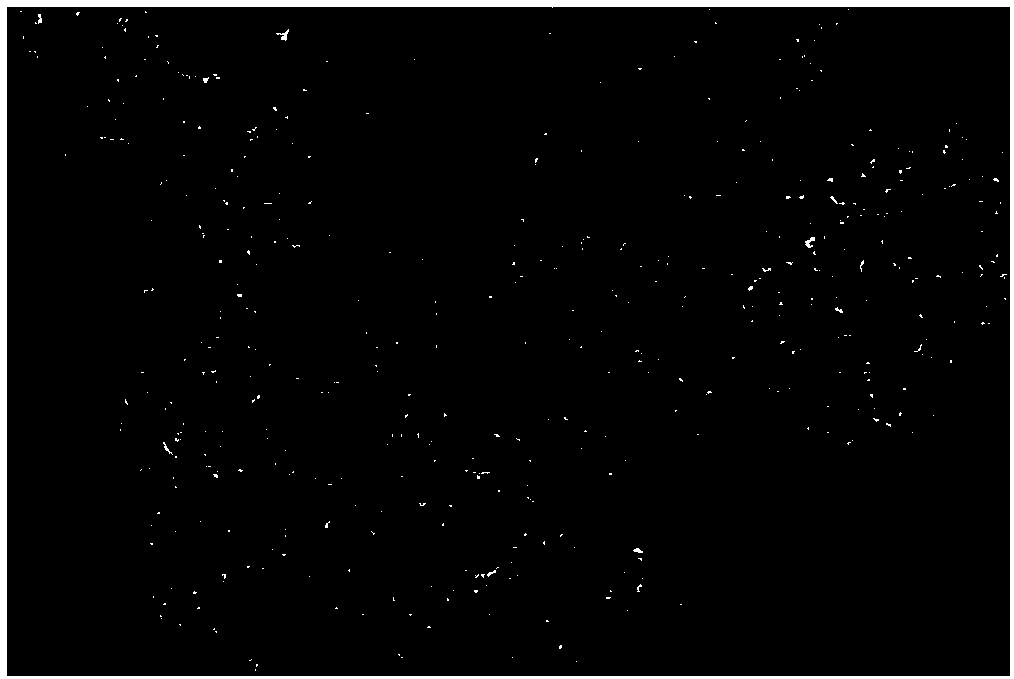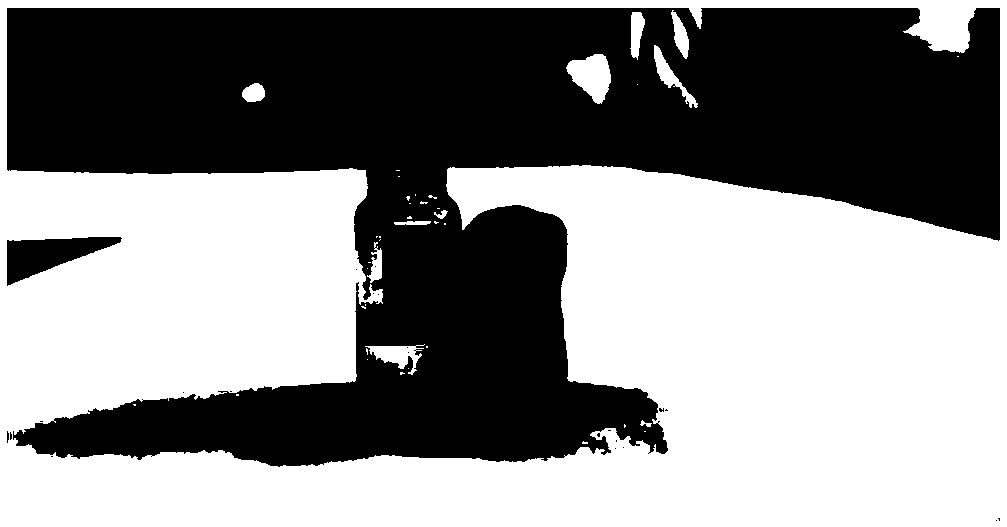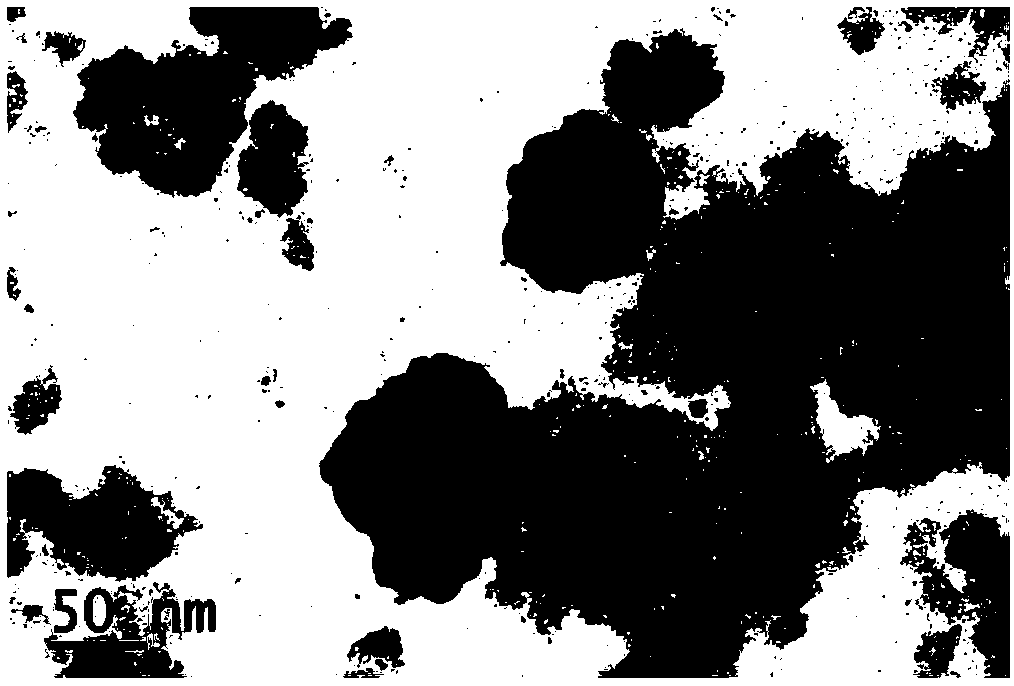Method for detecting escherichia coli based on magnetic graphene oxide composite gold star @ gold-silver alloy nanoparticles
A nanoparticle and Escherichia coli technology, applied in Raman scattering, material excitation analysis, etc., can solve problems such as poor stability and repeatability, increased time cost, false positives, etc., and achieve the effect of improving specificity and avoiding influence
- Summary
- Abstract
- Description
- Claims
- Application Information
AI Technical Summary
Problems solved by technology
Method used
Image
Examples
Embodiment 1
[0058] The magnetic graphene oxide nanomaterial preparation of embodiment 1:
[0059] 1) Preparation of magnetic graphene oxide nanomaterials: take 1.736g of NH 4 Fe(SO 4 ) 2 12H 2 O, 0.784g of (NH 4 ) 2 Fe(SO 4 ) 2 ·6H 2 O, in N 2 Under the protection condition of , add it into 180mL ultrapure water at 70℃, and stir well. Add 1MNH 4 OH to adjust the pH to 3, then add 40 mL of 0.9 mg / mL graphene oxide solution, and stir for 30 min. Adjust the pH to 9 and continue stirring for 1 h. Cool to room temperature, alternately wash twice with absolute ethanol and ultrapure water, and obtain magnetic graphene oxide nanomaterials after freeze-drying;
[0060] Among them, the TEM characterization of magnetic graphene oxide is shown in figure 1 As shown, it can be observed from the TEM image that a large number of magnetic nanoparticles are attached to the sheet surface of the magnetic graphene oxide, and the distribution is relatively uniform, wherein the diameter of the magn...
Embodiment 2
[0061] The magnetic graphene oxide nanomaterial preparation of embodiment 2:
[0062] 1) Preparation of magnetic graphene oxide nanomaterials: take 1.736g of NH 4 Fe(SO 4 ) 2 12H 2 O, 0.784g of (NH 4 ) 2 Fe(SO 4 ) 2 ·6H 2 O, in N 2 Under the protection condition of , add it into 200mL ultrapure water at 70℃, and stir evenly. Add 1MNH 4 OH to adjust the pH value to 4, then add 40 mL of 1.150 mg / mL graphene oxide solution, and stir for 30 min. Adjust the pH to 10 and continue stirring for 1 h. Cool to room temperature, alternately wash twice with absolute ethanol and ultrapure water, and obtain magnetic graphene oxide nanomaterials after freeze-drying;
Embodiment 3
[0063] The magnetic graphene oxide nanomaterial preparation of embodiment 3:
[0064] 1) Preparation of magnetic graphene oxide nanomaterials: take 1.736g of NH 4 Fe(SO 4 ) 2 12H 2 O, 0.784g of (NH 4 ) 2 Fe(SO 4 ) 2 ·6H 2 O, in N 2 Under the protection condition of , add it into 220mL ultrapure water at 70℃, and stir well. Add 1MNH 4 OH to adjust the pH to 5, then add 40 mL of 1.40 mg / mL graphene oxide solution, and stir for 30 min. Adjust the pH to 11 and continue stirring for 1 h. Cool to room temperature, alternately wash twice with absolute ethanol and ultrapure water, and obtain magnetic graphene oxide nanomaterials after freeze-drying;
[0065] Step 2: Preparation of Venus@gold-silver alloy nanoparticle solution:
[0066] The preparation method is as follows:
[0067] Preparation of Venus nanoparticles solution:
[0068]1) Synthesis of gold species
[0069] Take a clean Erlenmeyer flask, add 50mL 1mM chloroauric acid solution, heat and stir until boiling;...
PUM
| Property | Measurement | Unit |
|---|---|---|
| Diameter | aaaaa | aaaaa |
| Diameter | aaaaa | aaaaa |
Abstract
Description
Claims
Application Information
 Login to View More
Login to View More - R&D Engineer
- R&D Manager
- IP Professional
- Industry Leading Data Capabilities
- Powerful AI technology
- Patent DNA Extraction
Browse by: Latest US Patents, China's latest patents, Technical Efficacy Thesaurus, Application Domain, Technology Topic, Popular Technical Reports.
© 2024 PatSnap. All rights reserved.Legal|Privacy policy|Modern Slavery Act Transparency Statement|Sitemap|About US| Contact US: help@patsnap.com










